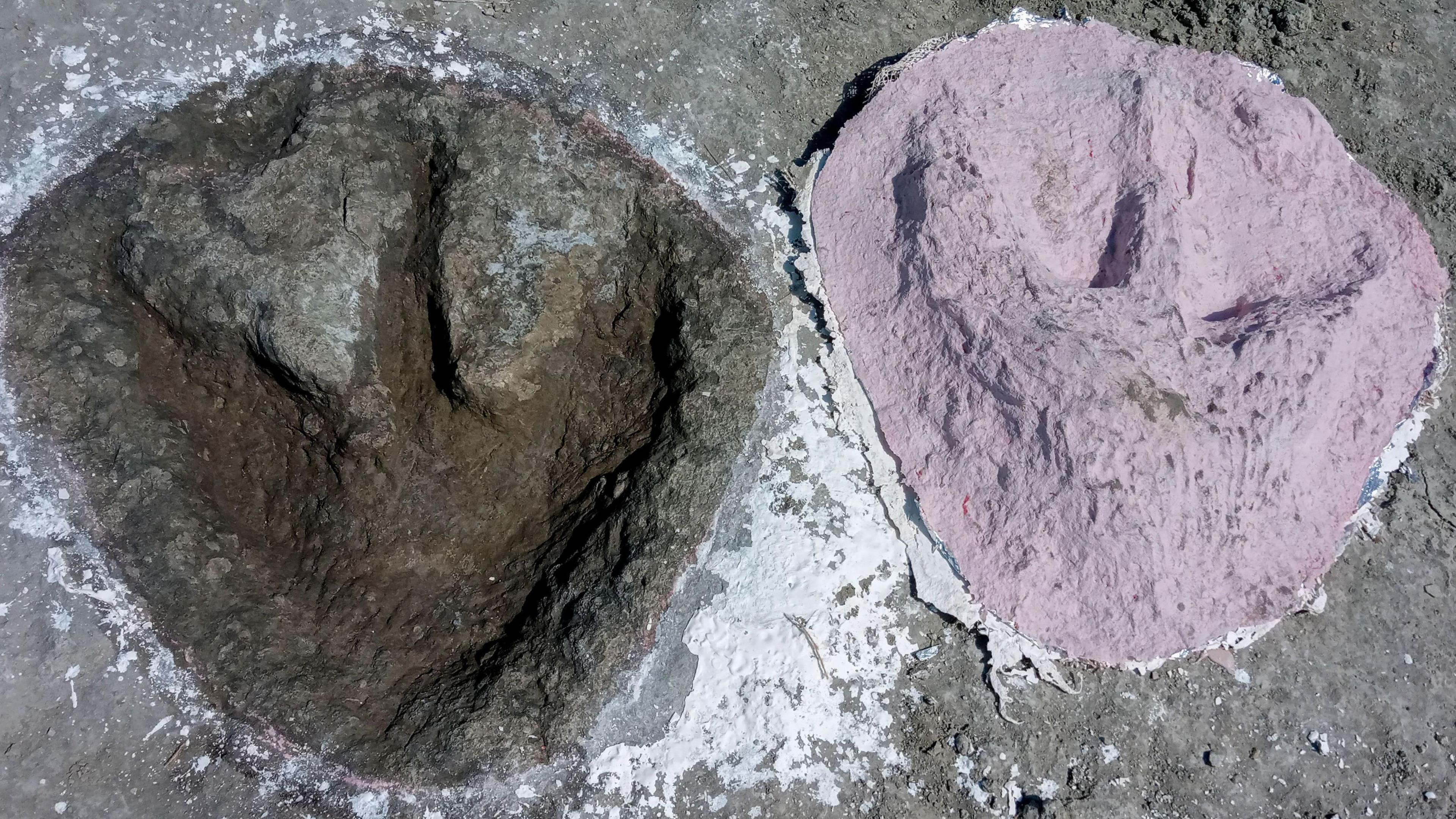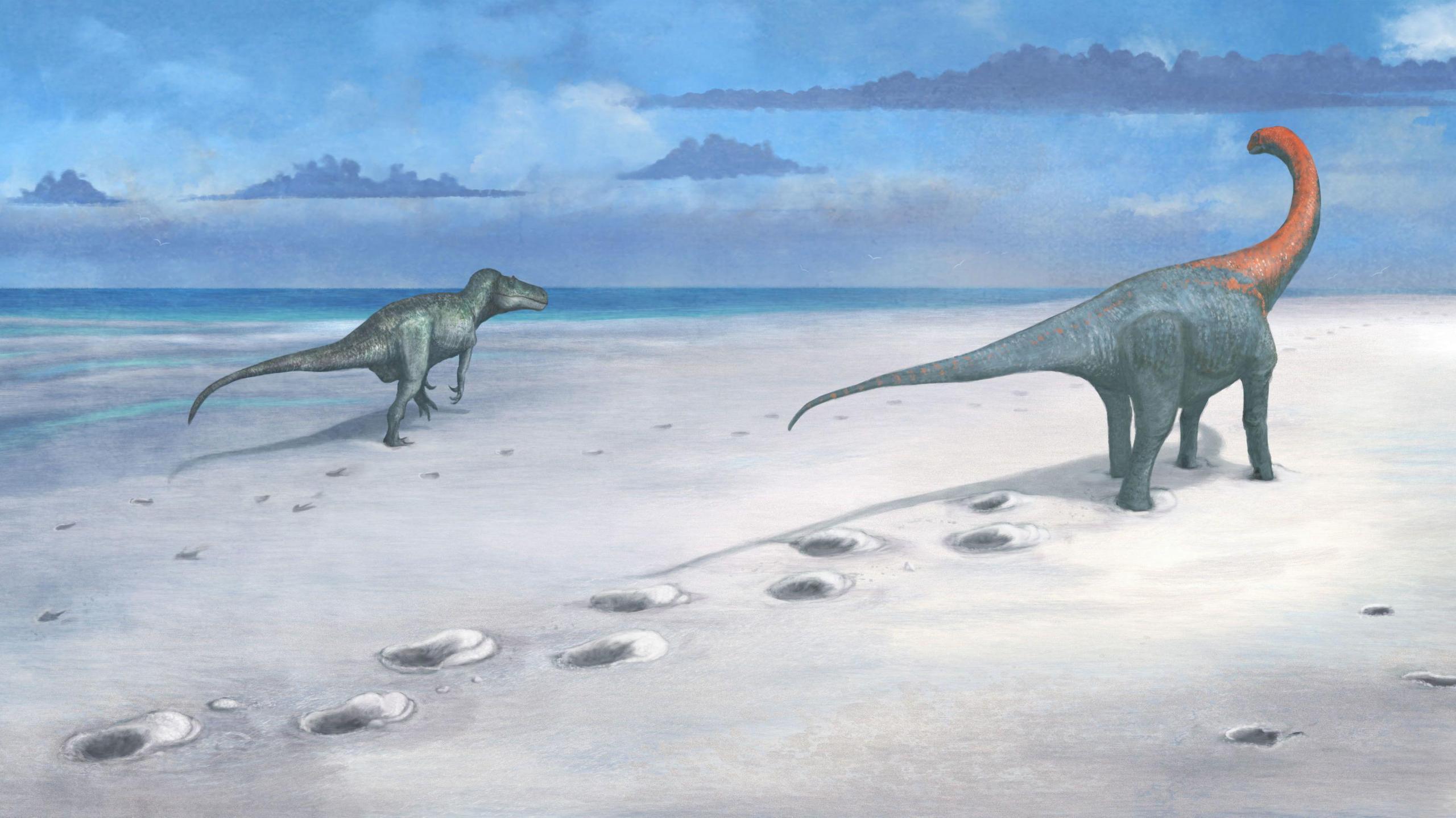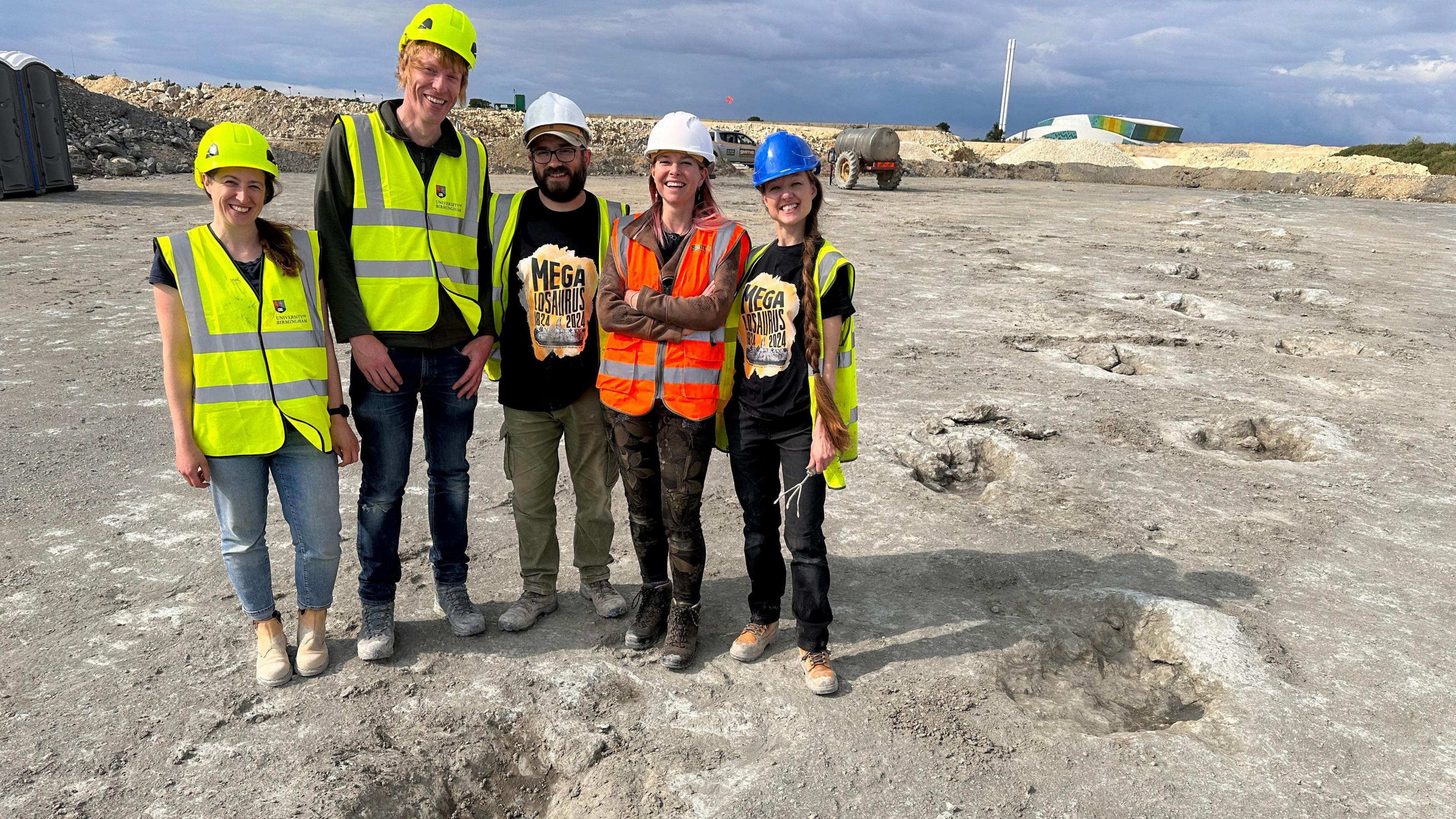Biggest ever UK dinosaur footprint site discovered

Following in the footsteps of giants! Scientists took special plaster casts of the dinosaur footprints.
- Published
The UK 's biggest ever dinosaur footprint site has been discovered in a quarry in Oxfordshire.
Around 200 dinosaur footprints, from 166 million years ago, were found by Gary Johnson, a worker at Dewars Farm Quarry, while he was driving a digger.
In the summer of 2024, more than 100 scientists, students and volunteers joined an excavation dig at the quarry to uncover the footprints - which features on a new TV series called 'Digging for Britain'.
During the dig, they discovered five sets of dinosaur tracks made by two different species of dinosaur - sauropods and Megalosaurus.
10-year-old finds dinosaur footprints on beach
- Published17 August 2024
Isle of Wight dino is 'most complete' in more than 100 years
- Published10 July 2024
First dinosaur named 200 years ago - what have we learned?
- Published14 February 2024

An artist's drawing of what a Megalosaurus and Cetiosaurus might have looked like
Four of the tracks the scientists discovered were made by sauropods, giant plant-eating dinosaurs which walked on four legs.
Their footprints look a bit like an elephant's - only much much bigger - these dinos reached up to 18m in length.
The fifth track is thought to have been created by a Megalosaurus.
These carnivorous creatures, walked on two legs and are some of the biggest predatory dinosaurs known of from the Jurassic period in Britain.
"This is one of the most impressive track sites I've ever seen, in terms of scale, in terms of the size of the tracks," said Prof Kirsty Edgar, a micro palaeontologist - a scientists who studies tiny dinosaur fossils using a microscope - from the University of Birmingham.
"You can step back in time and get an idea of what it would have been like, these massive creatures just roaming around, going about their own business," she said.

(From left to right) scientists Kirsty Edgar, Richard Butler, Duncan Murdock, Alice Roberts and Emma Nicholls pose next to the dinosaur footprints found at Dewars Farm Quarry in Oxfordshire
The team studied the footprints carefully, taking more than 20,000 photographs to create 3D models of both the site and individual footprints, and took casts of some of the prints.
"The really lovely thing about a dinosaur footprint, particularly if you have a trackway, is that it is a snapshot in the life of the animal," said Prof Richard a palaeobiologist from the University of Birmingham.
"You can learn things about how that animal moved. You can learn exactly what the environment that it was living in was like. So tracks give us a whole different set of information that you can't get from the bone fossil record," he said.
What happens next for the footprints hasn't yet been decided yet, but the scientists are working with Smiths Bletchington - the company which runs the quarry - and Natural England, to discuss options for preserving the site for the future.
They believe there could be more dinosaur footprints, just waiting to be discovered.
